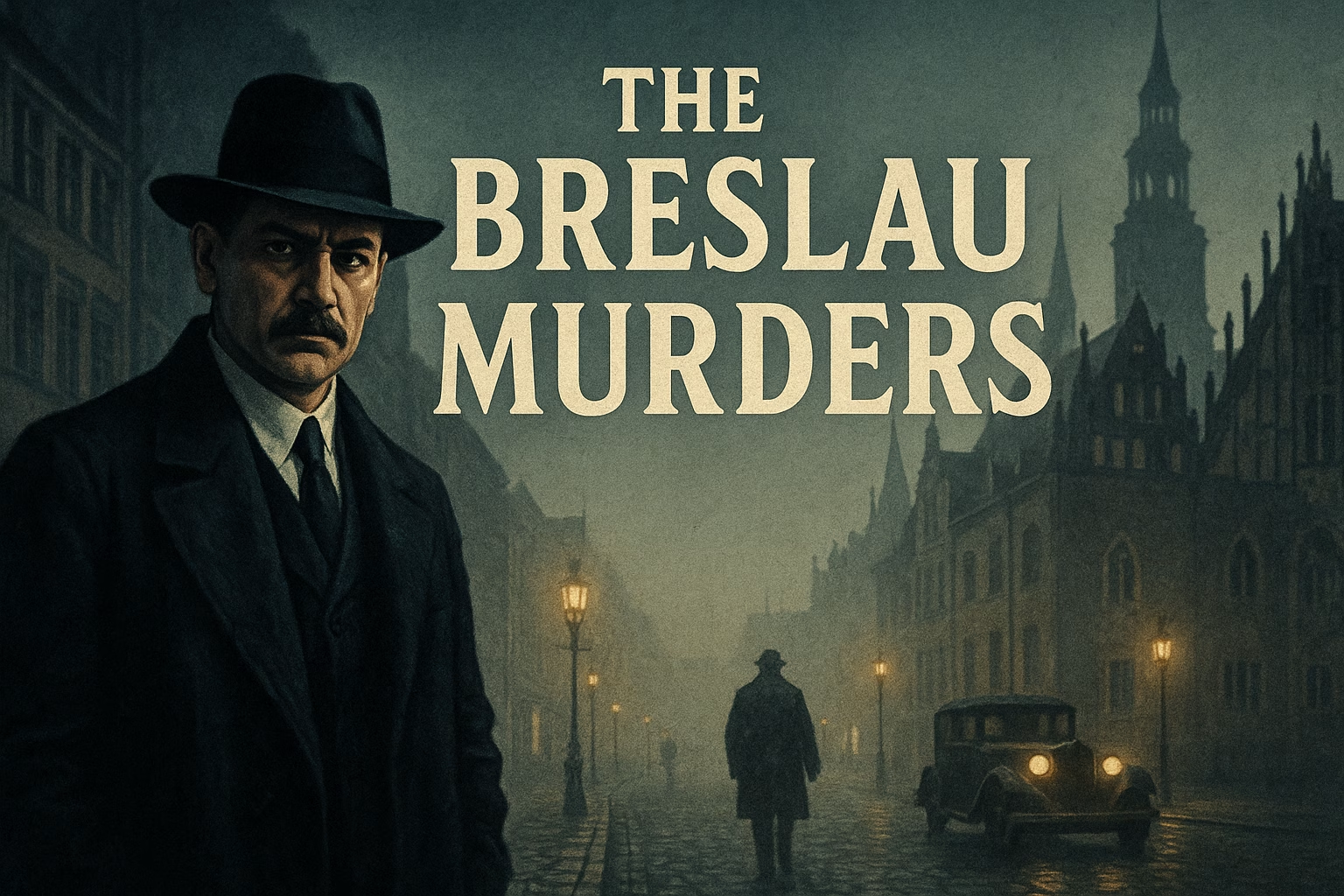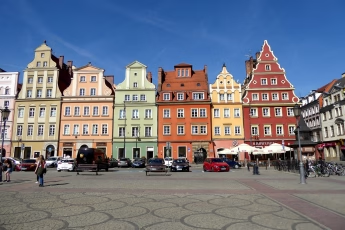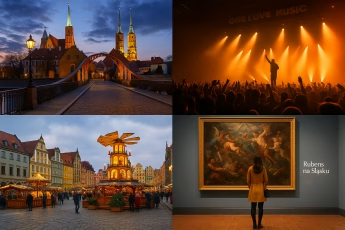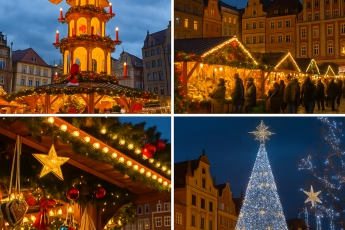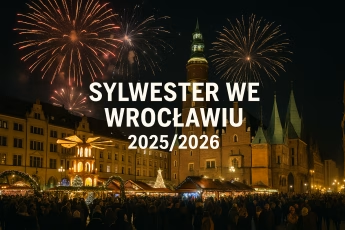- What is “The Breslau Murders” and what world does it take place in?
- Breslau and Wrocław – fiction or history?
- Why does the series use the name Breslau instead of Wrocław?
- The city’s atmosphere – noir, darkness and symbolism
- Does “The Breslau Murders” help understand the city’s history?
- Where can traces of historic Breslau be found in today’s Wrocław?
- Frequently asked questions about The Breslau Murders and Breslau
The series The Breslau Murders is one of the most intriguing recent productions to bring the former Wrocław into the realm of pop culture. The creators deliberately use the name Breslau, referring to the city’s pre-war history and the dark atmosphere of the 1930s.
This is not a classic guide to Wrocław, but a crime series in which the city itself becomes a fully-fledged protagonist of the story.
What is “The Breslau Murders” and what world does it take place in?
The plot of The Breslau Murders takes viewers to the year 1936, when the city still functioned under its German name, Breslau. In the background, the Olympic Games are approaching and the world’s attention is focused on the Third Reich. During this time, a series of brutal murders shakes Breslau, threatening to undermine the propagandistic image of the state.
The main character is Franz Podolsky, a controversial yet effective police commissioner of Polish origin. He becomes drawn into an investigation that quickly proves to be more than “just” a sequence of crimes. The city is filled with tension, suspicion and moral ambiguity – exactly as one would expect from a noir crime narrative.
Breslau and Wrocław – fiction or history?
Breslau is not a fictional city but the historical German name of present-day Wrocław, used until 1945. However, the serial version of Breslau is not a faithful reconstruction, but rather an artistic interpretation – a blend of real historical references, the mood of the era and a fictional criminal storyline.
The creators rely on clear visual symbols: monumental architecture, dark alleyways, hotel corridors and nightclubs to highlight the character of a borderland city – both geographically and culturally. Viewers are presented with an image of Breslau as a place of contrasts, where modernity intertwines with brutal politics and growing violence.
Why does the series use the name Breslau instead of Wrocław?
The choice of the name Breslau plays a key role in building the atmosphere. It immediately signals to the viewer that the story is set in the pre-war period and that the city exists within a completely different political and social reality than today’s Wrocław.
For an international audience, the title The Breslau Murders sounds exotic, mysterious and historically anchored. At the same time, it clearly separates the fictional narrative from the contemporary Polish city of Wrocław, now a modern academic and tourist centre. From the viewer’s perspective, it sends a clear message: this is the story of a city before changing borders and political systems.
The city’s atmosphere – noir, darkness and symbolism
“The Breslau Murders” is a series in which the city is almost an equal character alongside the protagonists. The image of Breslau is built within a noir aesthetic: dark, dense, at times claustrophobic. Streets sink into half-light, interiors are smoky, and the framing often enhances the sense of isolation and entrapment.
This visual approach perfectly complements a story about an investigation unfolding in the shadow of high politics. The crimes are brutal, but more important than explicit scenes is the atmosphere itself: the feeling that something disturbing is growing just beneath the surface of everyday life, while the characters struggle to preserve fragments of decency in a world where rules are already beginning to collapse.
Does “The Breslau Murders” help understand the city’s history?
The series is not a traditional history lesson, but it can serve as a valuable point of entry into reflecting on Wrocław’s past. It presents the city at a moment when political and social tensions are rising and daily life unfolds in the shadow of events that will soon reshape the entire map of Europe.
Watching “The Breslau Murders” makes it easier to realise that contemporary Wrocław did not emerge “from scratch” after 1945. Today’s city is a continuation of a place that for centuries changed languages, cultures and populations, yet retained its urban structure and distinctive character.
Where can traces of historic Breslau be found in today’s Wrocław?
Walking through the Old Town, around the Market Square, the university, the Cathedral Island bridges or former residential districts, one can still see architecture dating back to the Breslau era. Many tenement houses, public buildings and street layouts survived the war and were later incorporated into post-war Polish Wrocław.
Of course, the series is not a guide to specific addresses – it is rather a atmospheric story set in a city between worlds. That is why, after watching it, it is worth stepping into the city and trying to discover places that best reflect the spirit of historic Breslau: monumental buildings, narrow streets, the banks of the Oder River or the surroundings of former hotels and theatres.
For many viewers, “The Breslau Murders” may become an impulse to look at Wrocław not only as a modern weekend destination, but as a space where history – both bright and dark – remains embedded in its walls, details and urban narratives.
The series The Breslau Murders demonstrates how pop culture can bring the complex past of a city closer and encourage a more conscious exploration of Wrocław. It does not replace a museum visit or a guided walk, but it can serve as an excellent starting point for those who wish to see how historic Breslau continues to exist in the imagination of filmmakers and audiences around the world.

